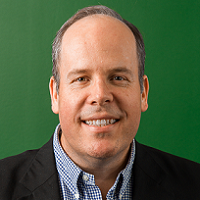 By Tom Dorsett, CEO, RazorMetrics
By Tom Dorsett, CEO, RazorMetrics
Twitter: @razormetrics
The U.S. spent nearly $348 billion last year on prescription drugs, the highest in the world and an average of about $1,200 per person. To put this in perspective, Sweden spent about $350 per capita. High drug costs in the U.S. continue to be a threat to patient health and long-term outcomes.
According to the National Bureau of Economic Research, a small $10 increase in out-of-pocket costs to patients leads to a:
- 23% decrease in total drug consumption
- 33% increase in monthly mortality
To get around high monthly prescription bills, patients split pills in half to make medicine last longer or only take one dose every other day. These cost-cutting tactics do save money in the short term but predictably lead to significantly higher healthcare costs and increased risk of serious illness or death. Diseases like diabetes or COPD cannot be effectively managed by only taking half the recommended prescription.
Physicians are also frustrated by high drug costs and the resulting impact on health outcomes. Treatments they prescribe can’t work if their patient cannot afford it. Physicians have a lot on their plate and the expectations are only growing. Though physicians have no control over the cost of medicine, they are the first line of blame when the patient is faced with a high pharmacy bill.
The Inflation Reduction Bill signed by the President on August 16th put into motion several rules that will help lower prescription drug costs for patients and hospitals. Unfortunately, those changes do not go into effect for another two years. In the meantime, there are ways to save on prescriptions now, with little effort or burden on physicians or their patients.
- Go beyond generics: Most physicians already talk to patients about generics but very few talk about biosimilars. These are becoming more accepted but there is still wide-spread resistance in switching. A biosimilar can cost up to 30% less than its brand name counterpart. By switching to biosimilars, the U.S. could reduce prescription costs by approximately $54 billion.
- Write 90-day prescriptions instead of 30-day for chronic conditions: Bulk purchasing isn’t just for wholesalers these days. It works for patients too. The 90-day supply saves on the “soft costs” of retail pharmacy, i.e., pharmacist time, the billing, etc. The manufacturing cost is baked in, but these other costs are layered on with every fill so decreasing the number of refills from 1 a month to 1 every three months saves a bundle.
- Participate with a health tech company: Physicians can work with a healthcare tech company to receive patient specific formulary information, taking the guesswork out of prescribing covered medications. These companies can offer medically equivalent alternatives to change from an uncovered drug to another one that is covered. This cooperation stops the back and forth with the patient, pharmacy, and insurance company. It’s a solution that engages the physician – the person with the patient history and authority to prescribe – to help in lowering drug costs without burdening patients.
- Encourage patients to use mail delivery pharmacy: More people are beginning to use mail delivery discount pharmacy. Companies like DiRx and Mark Cuban’s Cost Plus Drugs offer a direct-to-consumer sales model that includes delivery. The model is based on lower cost generics and the companies save by not having brick and mortar stores. The discounts can be quite significant, especially for 90-day supply orders.
- Don’t fall for the combination drug trick: Manufacturers have a lot of tricks to keep brand name monopoly status on their drugs. One tactic is to take two medications that are about to lose regulatory exclusivity and put them together into one pill and rename it. Boom! New regulatory exclusivity and high costs. Keep prescribing the two medicines to save your patients money.
These five tips will help physicians in more ways than just getting affordable treatments to their patients. Recent research found that two thirds of patients said they would have a more favorable opinion of their healthcare provider if they changed the prescription to a lower cost option and 80% said they would prefer their physician take the lead in changing their medication(s) to a lower cost drug automatically. Put simply, patients want their physician to work with them to get affordable medications.
